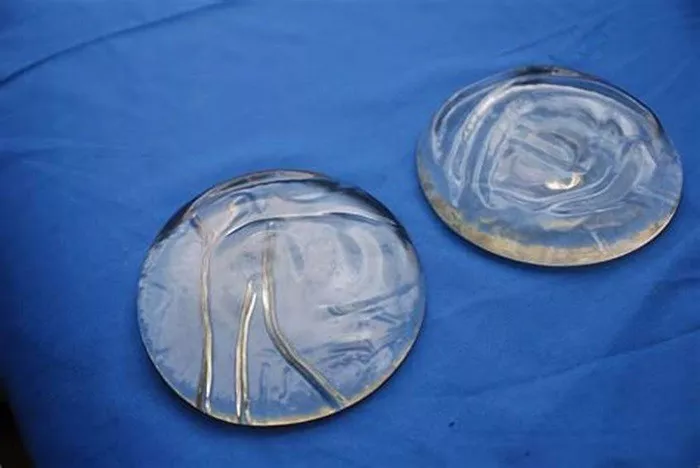Choosing the right breast implant is a critical decision for anyone considering breast augmentation. The choice involves various factors, including personal preferences, body type, and medical considerations. This article provides an objective and professional guide to help you make an informed decision. Below are seven essential ways to choose the right breast implant for you.
1. Understand the Types of Breast Implants
Saline Implants
Saline implants are filled with sterile salt water. They are inserted empty and filled once they are in place.
Pros:
Adjustable size during surgery
Smaller incision
Deflation is noticeable immediately
Cons:
Firmer feel
Risk of rippling
Silicone Implants
Silicone implants are pre-filled with a silicone gel. They tend to feel more like natural breast tissue.
Pros:
Softer, more natural feel
Less rippling
Cons:
Requires a larger incision
Silent rupture (leakage is not easily detectable)
See Also: 6 Side Effects Of Breast Enlargement Injections
Gummy Bear Implants
Gummy bear implants, or form-stable implants, maintain their shape even when the implant shell is broken.
Pros:
Natural look and feel
Less likely to leak or rupture
Cons:
Requires a larger incision
Firmer than traditional silicone implants
2. Consider Your Desired Size and Shape
Size
Choosing the right size is crucial. It should complement your body proportions and meet your aesthetic goals.
Factors to Consider:
Your body frame
Existing breast tissue
Desired volume
Shape
Breast implants come in round and anatomical (teardrop) shapes.
Round Implants:
Provide more lift, fullness, and cleavage
Ideal for a more dramatic change
Anatomical Implants:
Mimic the natural slope of the breast
Suitable for a subtle, natural look
3. Evaluate the Implant Surface
Smooth Implants
Smooth implants move within the breast pocket, which can feel more natural.
Pros:
Less rippling
Softer feel
Cons:
Higher risk of movement and displacement
Textured Implants
Textured implants adhere to the tissue, reducing movement and lowering the risk of capsular contracture.
Pros:
Reduced risk of displacement
Less chance of capsular contracture
Cons:
Slightly firmer feel
Potential for more visible rippling
4. Assess the Implant Placement
Subglandular (Over the Muscle)
Implants placed over the pectoral muscle provide more fullness at the top of the breast.
Pros:
Shorter recovery time
Easier access for adjustments
Cons:
More visible edges
Higher risk of capsular contracture
Submuscular (Under the Muscle)
Implants placed under the pectoral muscle offer a more natural look.
Pros:
Less visible edges
Lower risk of capsular contracture
Cons:
Longer recovery time
More discomfort post-surgery
5. Consult with a Board-Certified Plastic Surgeon
Experience and Expertise
Choosing a surgeon with extensive experience in breast augmentation is vital. A board-certified plastic surgeon ensures you receive the highest standard of care.
Things to Consider:
Surgeon’s credentials
Number of breast augmentations performed
Patient testimonials and before-and-after photos
Communication and Comfort
Your surgeon should listen to your goals, answer your questions, and make you feel comfortable. Clear communication is key to achieving your desired outcome.
Questions to Ask:
What implant type and size do you recommend for me?
What is your complication rate with breast implants?
Can I see before-and-after photos of previous patients?
6. Understand the Risks and Complications
Common Risks
Every surgery carries risks. Understanding these risks can help you make an informed decision.
Possible Complications:
Infection
Bleeding
Implant rupture
Capsular contracture
Long-Term Considerations
Breast implants are not lifetime devices. You may need additional surgeries in the future for various reasons, such as implant replacement or complications.
Future Surgeries:
Implant removal or replacement
Treatment of complications
Cosmetic revisions
7. Consider Your Lifestyle and Personal Preferences
Activity Level
Your level of physical activity can influence the type of implant and placement. Athletes and those with an active lifestyle may prefer implants placed under the muscle
for added support.
Considerations:
Impact on physical activities
Recovery time
Aesthetic Goals
Your personal preferences regarding breast shape, size, and feel should guide your decision. It’s essential to choose an implant that aligns with your vision.
Personal Preferences:
Desired cleavage and fullness
Feel of the implant
Natural vs. augmented look
Conclusion
Choosing the right breast implant involves careful consideration of various factors, including implant type, size, shape, surface, placement, and your lifestyle. Consulting with a board-certified plastic surgeon is crucial to making an informed decision that meets your aesthetic goals and ensures your safety. By understanding the options and considering your personal preferences, you can achieve a satisfying and successful breast augmentation outcome.
Related topics:

